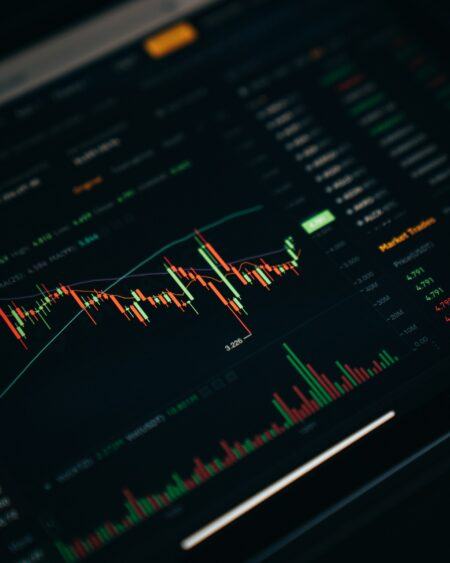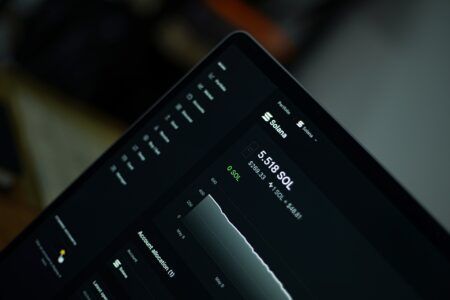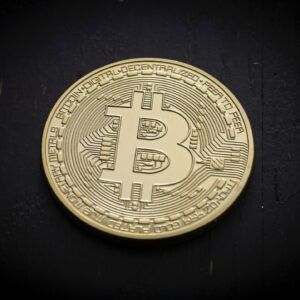On Friday (July 10), Bitcoin is trading around $9,200, seemingly under pressure by events in China and the United States.
Let’s start with China.
The CSI 300 is “a capitalization-weighted stock market index designed to replicate the performance of the top 300 stocks traded on the Shanghai Stock Exchange and the Shenzhen Stock Exchange”.
Yesterday (July 9), the CSI 300 closed at 4840.77, which means that it had gone up by 17.78% since June 29, i.e. in just nine trading sessions.
On Monday (July 6), the CSI 300 closed over 250 points (i.e. 5.67%) higher at 4,670.09, reaching a level last seen in June 2015, after “a front page editorial in state-owned China Securities Journal” (published on July 6) talked about the “wealth effect of the capital markets” and suggested that a “healthy bull market” was important for the economy at this time (i.e. after the damage done by the COVID-19 pandemic).
However, according to a report published by Bloomberg earlier today, it seems that the Chinese government may have decided that the country’s stock market was getting overheated and that the government may have already started to signal its intention “to avoid a replay of 2015, when they were wrong-footed by both the scale of the stock market’s boom and severity of its bust.”
Bloomberg says that the first signs of the government’s discomfort with the extreme bullish market sentiment came late yesterday when two state-owned funds—China’s National Council for Social Security Fund (China’s national pension fund) and National Integrated Circuit Industry Investment Fund Co.—announced that they were planning to “trim holdings of stocks that soared this week.”
Also, per this report, at the start of the day, “the state-run China Economic Times warned about the dangers of a ‘crazy’ bull market, while Caixin reported that regulators had asked mutual fund companies to cap the size of new products.”
Traders and other market observers in China seem to believe that these moves “amounted to a warning from Chinese officialdom that the country’s world-beating equity boom has gone too far, too fast.”
The CSI 300 ended the day 87.64 (or 1.81%) to close at 4,753.13, as you can see in the one-month chart below from Google Finance:

Niu Chunbao, a fund manager at Shanghai Wanji Asset Management Co., told Bloomberg:
“The signal could not be clearer — stocks have just become too hot for the regulators’ liking. A slight dip or so may put their minds more at ease at this point.”
A gradually rising stock market in China is good for the Chinese economy since “the wealth effect could help revive virus-crushed consumer demand” and “higher share prices will make it easier for indebted companies to finance themselves.”
However, a cooling of stock market sentiment could impact the price of Bitcoin due to the amount of Bitcoin purchased by Chinese retail and institutional buyers via Tether and OTC desks since the wealthier they feel, the more likely it is that they will speculate in an even riskier asset class such as Bitcoin.
Yesterday (July 9), Qiao Wnag, Messari’s former Director of Product, talked about the correlation of crypto with the CSI 300:
“Crypto is correlated with CSI300” will be the new “crypto is correlated with S&P500”. There’s a huge overlap between speculators of Chinese stonks and crypto. After all both are sentiment- and narrative-driven retail casinos. Both were on fire last few days. https://t.co/xBmamANRwE
— Qiao Wang (@QWQiao) July 9, 2020
As for the United States, there are three two factors that could affect the U.S. economy and thereby U.S. stocks:
- the outcome of the U.S. 2020 presidential election in November; and more importantly
- the management of the worsening COVID-19 crisis in the U.S.
Currently, the Democratic Party’s presumptive nominee Joe Biden appears to be leading in most polls, and some investors fear that if he were to be elected U.S. president, it could be bad for the U.S. stock market since he has said that he plans to increase corporation tax from 21% to 28% and to end “shareholder capitalism.”
Soeaking at event in Pennsylvania yesterday, he said:
“Throughout this crisis, Donald Trump has been almost singularly focused on the stock market, the Dow and Nasdaq. Not you. Not your families.
“If I am fortunate enough to be elected president, I’ll be laser-focused on working families, the middle-class families I came from here in Scranton. Not the wealthy investor class. They don’t need me.”
As for the COVID-19 situation in the U.S., according to CBS News, on Thursday 63,200 cases were reported, which was “another all-time, single-day high for new confirmed infections”, which was up from the previous high (60,000) reported on Tuesday (the data came from Johns Hopkins University).
California, Florida, and Texas remain three of the worst affected states, and they have sadly “just recorded their highest daily death tolls yet.”
Carl Quintanilla, who is a principal anchor of CNBC’s “Squawk on the Street” tweeted earlier today:
FUNDSTRAT: “Daily deaths is becoming the most important metric to watch, because up until this point, daily cases and deaths were diverging. .. we have now had 3 consecutive days of ~800 deaths per day. .. This will be the weekend's biggest question for me.” @fundstrat pic.twitter.com/QCAxuTXjS4
— Carl Quintanilla (@carlquintanilla) July 10, 2020
CNBC reported yesterday that “nationally, coronavirus cases were growing in 40 states, as of Wednesday, based on a seven-day moving average.”
Since not everyone in the U.S. can agree on the best way to control the spread of COVID-19, unfortunately, it could be some time before the situation significantly improves, and in the meantime, it may become necessary for several states to re-introduce lockdown measures that could further negatively impact U.S. consumer confidence and the financial future of U.S. companies.
At the time of writing (as of 17:10 UTC on July 10), the Dow Jones Industrial Average (DJIA), the S&P 500, and the Nasdaq are at 25924.39 (up 0.85%), 3166.99 (up 0.47%), and 10551.32 (up 0.03%) respectively.
As for Bitcoin, per data from CryptoCompare, as of 17:26 UTC on July 10, it is trading at $9,216, down 0.11% in the past 24-hour period:

As digital asset exchange Kraken reminded us in a blog post published yesterday, according to its Bitcoin Volatility Report for June 2020, last month, Bitcoin’s correlation with the S&P 500 strengthened (“flipping from 0.13 to 0.52”), which means that, assuming this positive correlation continues, if the S&P 500 takes a fall, Bitcoin could also end up with a bruise.
Featured Image by “1643606” via Pixabay.com









